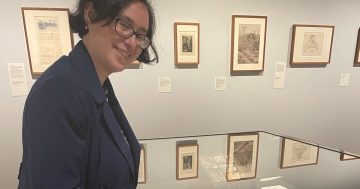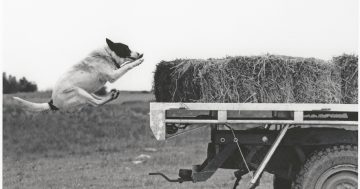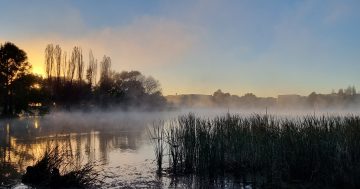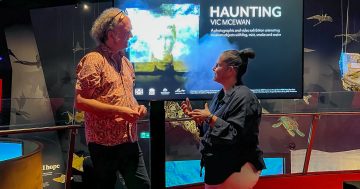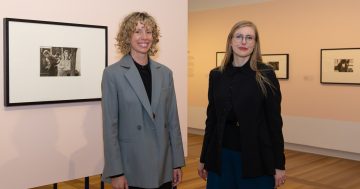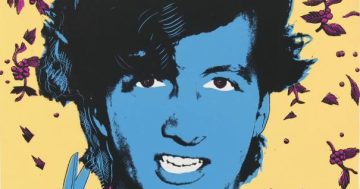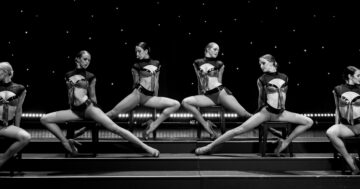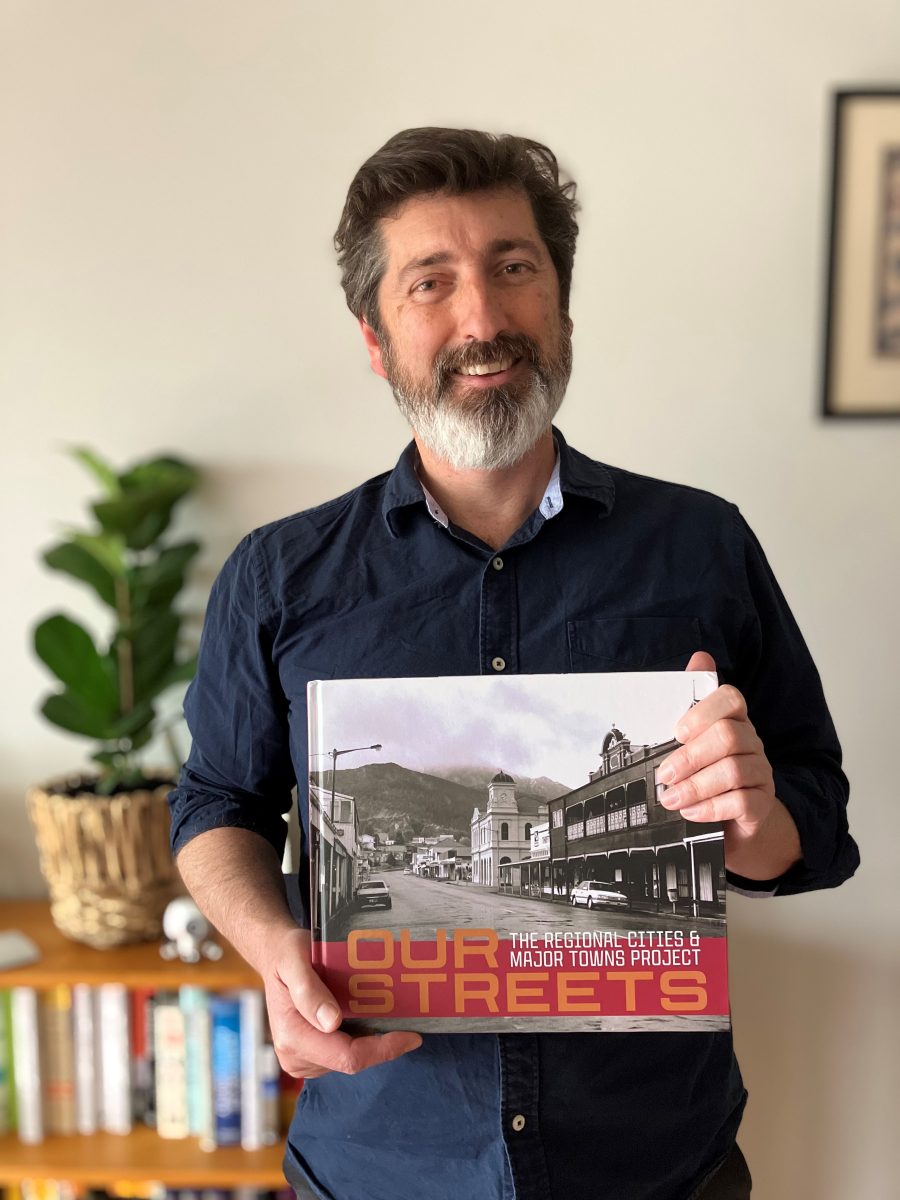
The National Library of Australia’s Matthew Jones with the new NLA Publishing book he curated, Our Streets: The Regional Cities and Major Towns Project. Photo: Amelia Hartney.
Back in the mid-1990s, the National Library of Australia (NLA) in Canberra commissioned 18 photographers to shoot the buildings of 90 regional cities and towns across the country.
The premise, the photographers were told, was to capture for the national collection, contemporary images of the houses, roads, parks, social life, schools and shops – images that told the real story more so than words could ever do.
About 2600 images were created and absorbed into the NLA collection.
Many of those images featured in an NLA exhibition in 2020-21, Australian Dreams: Picturing Our Built World, curated by Matthew Jones.
“Those images have always stayed with me,” Mr Jones said. “There was something about them. I always thought they would make a great book.
And they did – it’s called Our Streets: The Regional Cities and Major Towns Project – and it’s the latest offering from NLA Publishing.
“Today, we are familiar with the dramatised, stylised shots of buildings found in coffee table books,” Mr Jones said. “These images are usually captured by digital cameras, the colours are highly saturated … the buildings are shot from angles and in light to show them to their best advantage.”
But in this project, he said, the photographers created documentary records, “not high art”.
The images were also different because the photographers embarked on this project just before digital cameras took over, so they used the old analogue technology – and hundreds of rolls of film.
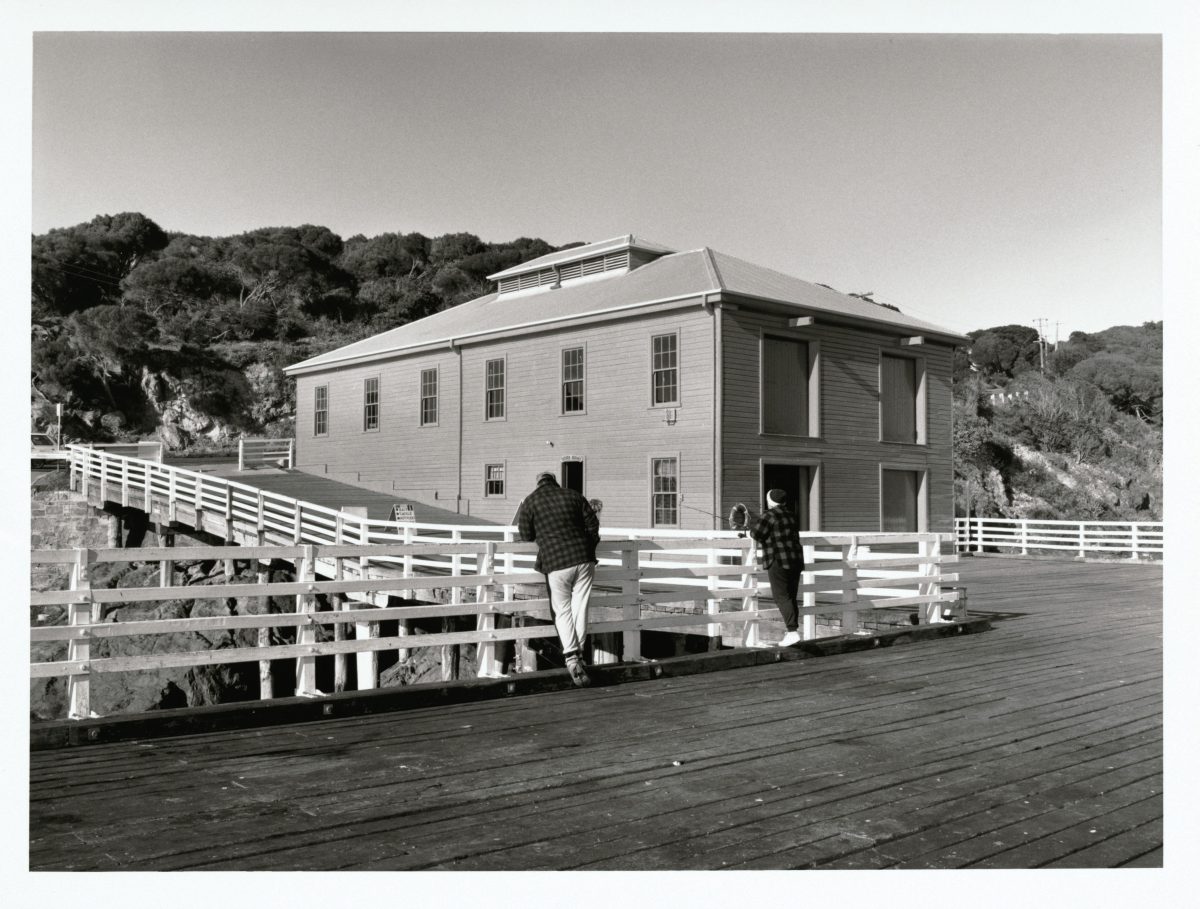
Photographer Brendan Bell captured these fishermen trying their luck off Tathra Wharf. Photo: National Library of Australia.
“You can see that in the photos too,” he said. “With digital, you can snap thousands of shots so if you had someone walking into the frame, you might not use that. But I really like that some of the images in the book do have people in the frame; they’re more gritty, more elegant images.”
The photographs in Our Streets stretch across the breadth of Australia, including areas close to home such as Goulburn, Wagga Wagga, Wollongong, Bega, Gunning, Yass, Young, Braidwood, Cootamundra, Tathra and Tumut.
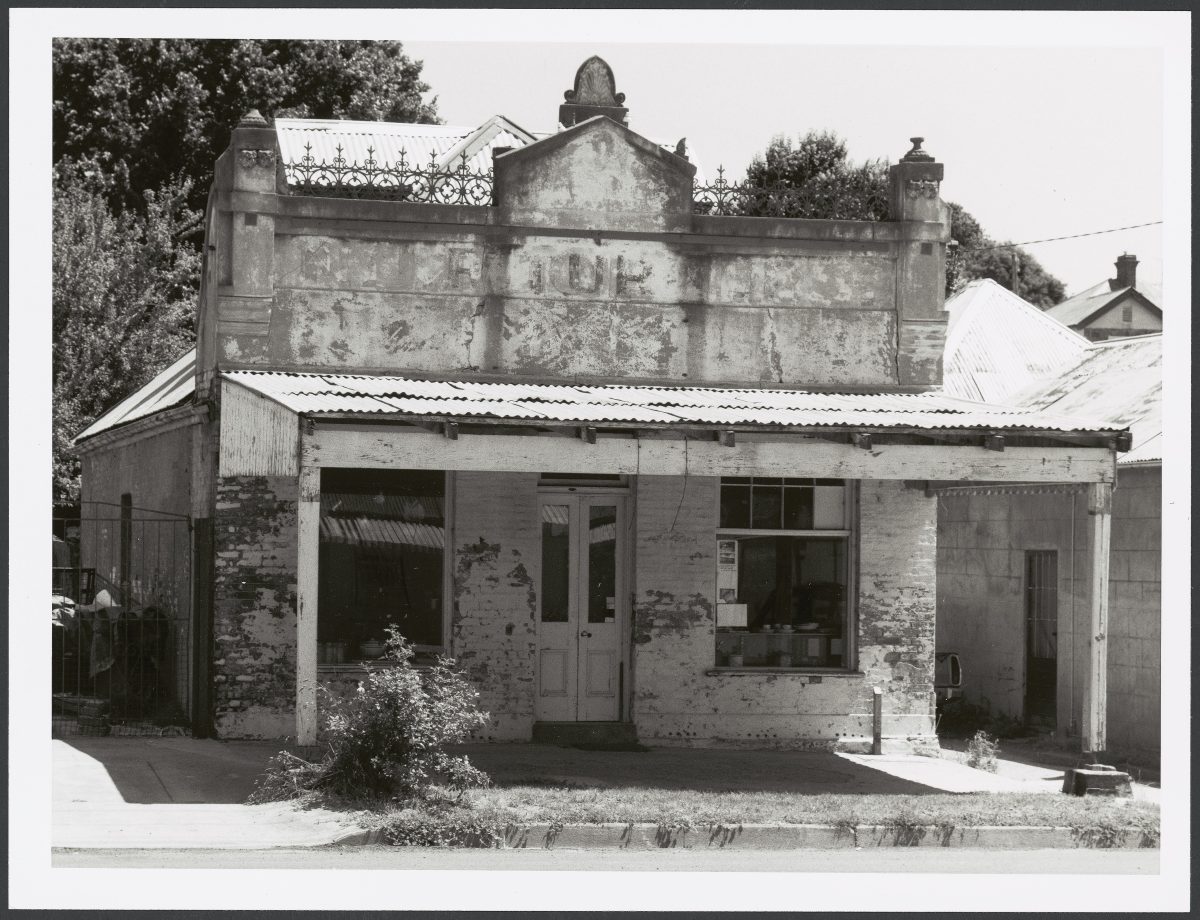
The old abandoned antique shop in the main street of Gunning, near Yass, photographed by Robert Deane for the Our Streets book. Photo: National Library of Australia.
“The photographers were asked to photograph a slice of life,” Mr Jones said. “We’ve organised the book so it’s like the reader is driving into town. First you might have the industrial area as you come in, maybe with grain silos, then the light industrial area maybe with some car dealerships, then you have the schools, swimming pool, houses …
“We also wanted to show how buildings were unique to their area – like how you wouldn’t find a Queenslander house in Tasmania. But there are also the places that can look the same wherever they are, like the bakery in Western Australia … the sort of bakery you see all over the country – you can almost smell the sausage rolls and taste the vanilla slice.”
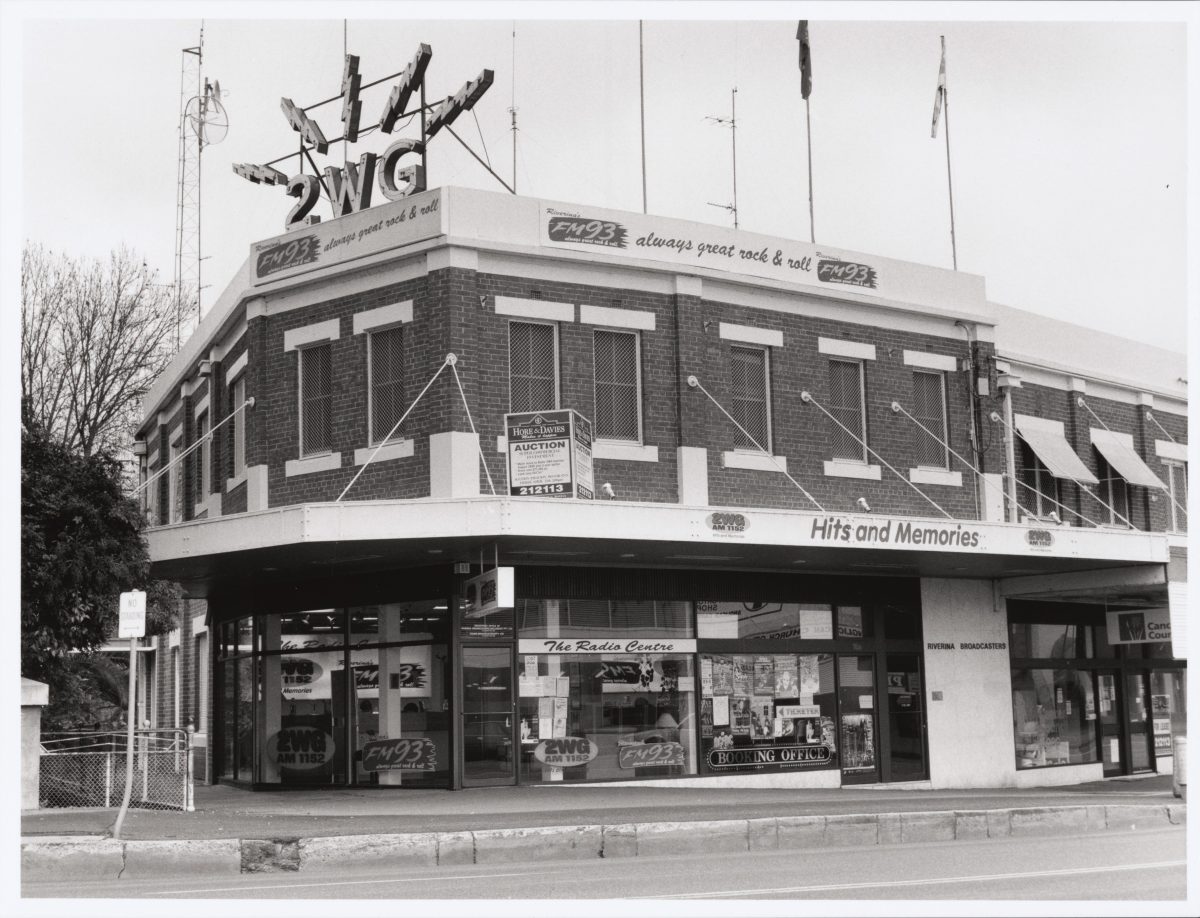
Photographer Grant Ellmers shot Wagga’s 2WG radio station building on Fitzmaurice Street for the book. Photo: National Library of Australia.
Mr Jones said because the photographers used a uniform approach, that is, no tricks to make their subject matter something that it wasn’t, the result was a realistic picture of regional Australia in the 1990s.
It also captured, he said, the beauty of preserved buildings that still take pride of place in regional cities like Goulburn, with its grand courthouse designed by colonial architect James Barnet and built in the mid-1880s.
All the images, he said, were a snapshot of the Australian town, from Warrnambool to Broome, captured in the 1990s. Each might tell a unique story about place and history, but they were all quintessentially Australian – in their own way.
More information about Our Streets: The Regional Cities and Major Towns Project is available from the NLA Bookshop website.
Original Article published by Sally Hopman on About Regional.












